Growing evening primrose from seed is a way to welcome one of nature’s most enchanting healers into your garden. Not only does this biennial plant illuminate gardens with delicate yellow blooms that open at dusk, but it also provides valuable seeds rich in omega-6 fatty acids that herbalists have treasured for centuries. From harvesting young leaves for spring vegetables to collecting evening primrose seeds for medicinal oil, growing your own evening primrose opens up possibilities for both the kitchen and medicine cabinet.
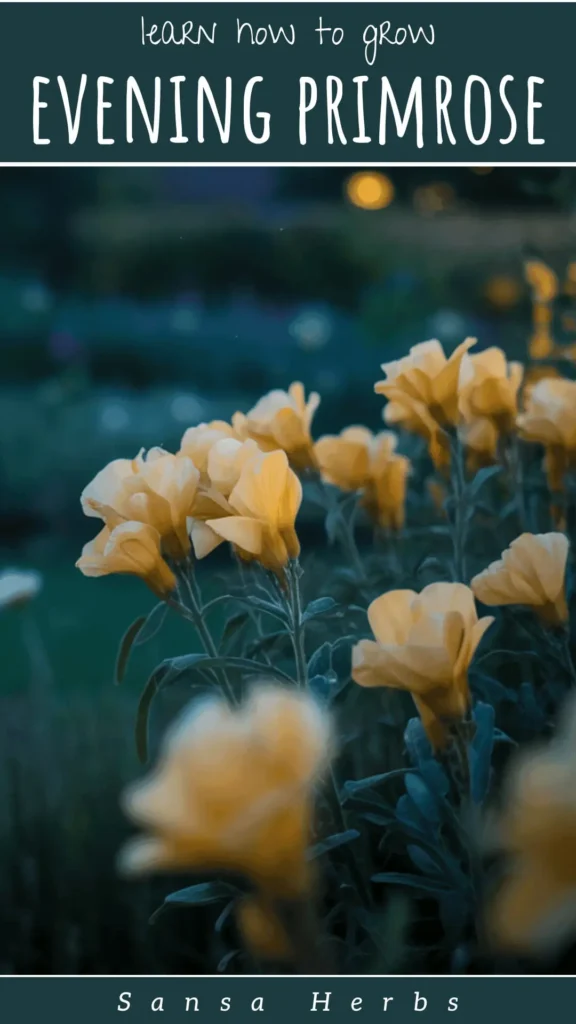
Jumpstart Your Medicinal Garden
Love the idea of growing evening primrose and a full apothecary garden? Nicole Apelian’s Medicinal Garden Kit delivers 10 easy-grow medicinal seeds (including evening primrose) + step-by-step guides. Perfect for beginners! → Get the Kit Here
About Evening Primrose
Evening primrose seeds (Oenothera biennis) develop in the second year, ensuring a continuous cycle of growth when allowed to self-sow. Native Americans called it the “King’s cure-all” for its versatile medicinal properties. Despite its common name, it’s not related to true primroses but belongs to the evening primrose family (Onagraceae).
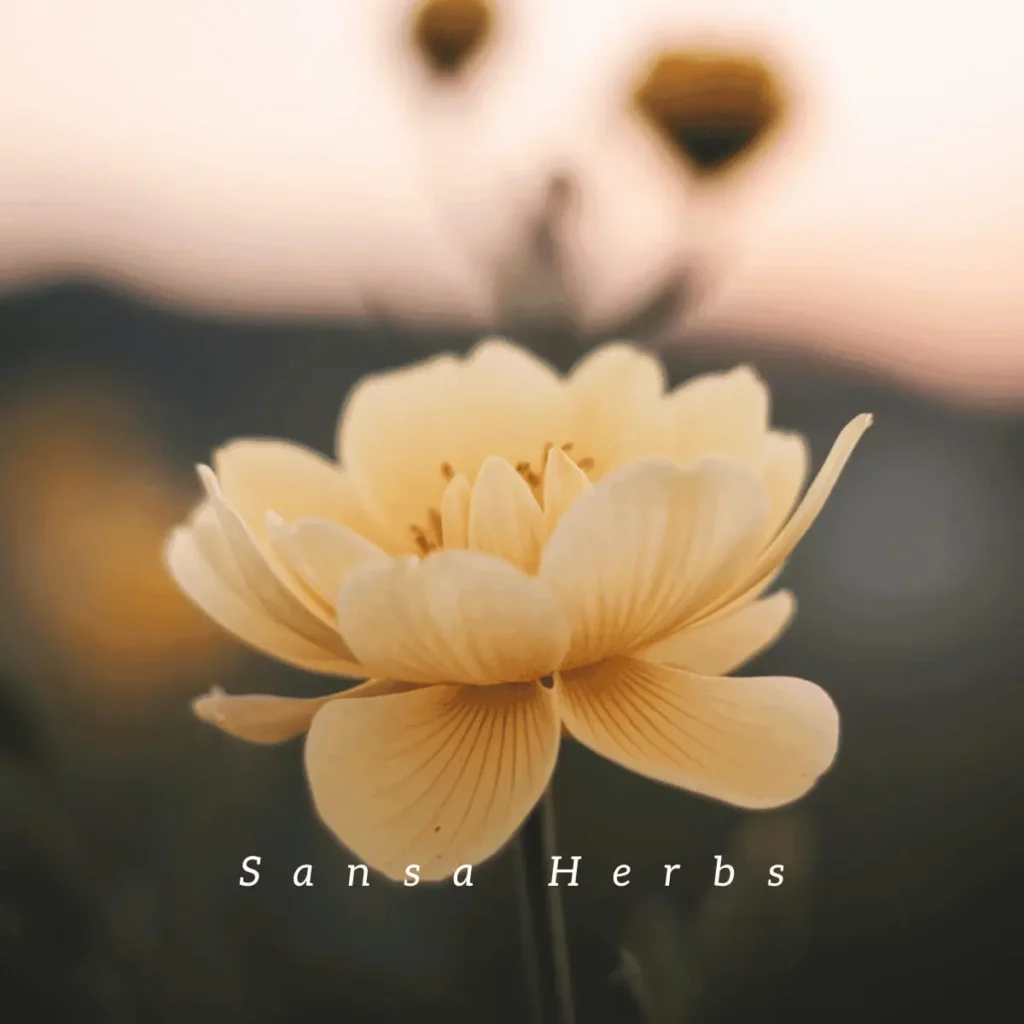
Grow evening primrose as a biennial in zones 4-9. While they readily self-seed in favorable conditions, they take two years to complete their lifecycle – producing a low rosette of leaves in the first year and flowering stems in the second year.
You may enjoy reading: Growing Edible Medicinal Flowers: A Complete Guide to Calendula, Lavender, and More
Evening primrose plants grow tall and stately, reaching 24-72 inches in height. This makes them perfect for:
- Back borders
- Wildflower gardens
- Naturalized areas
- Medicinal gardens
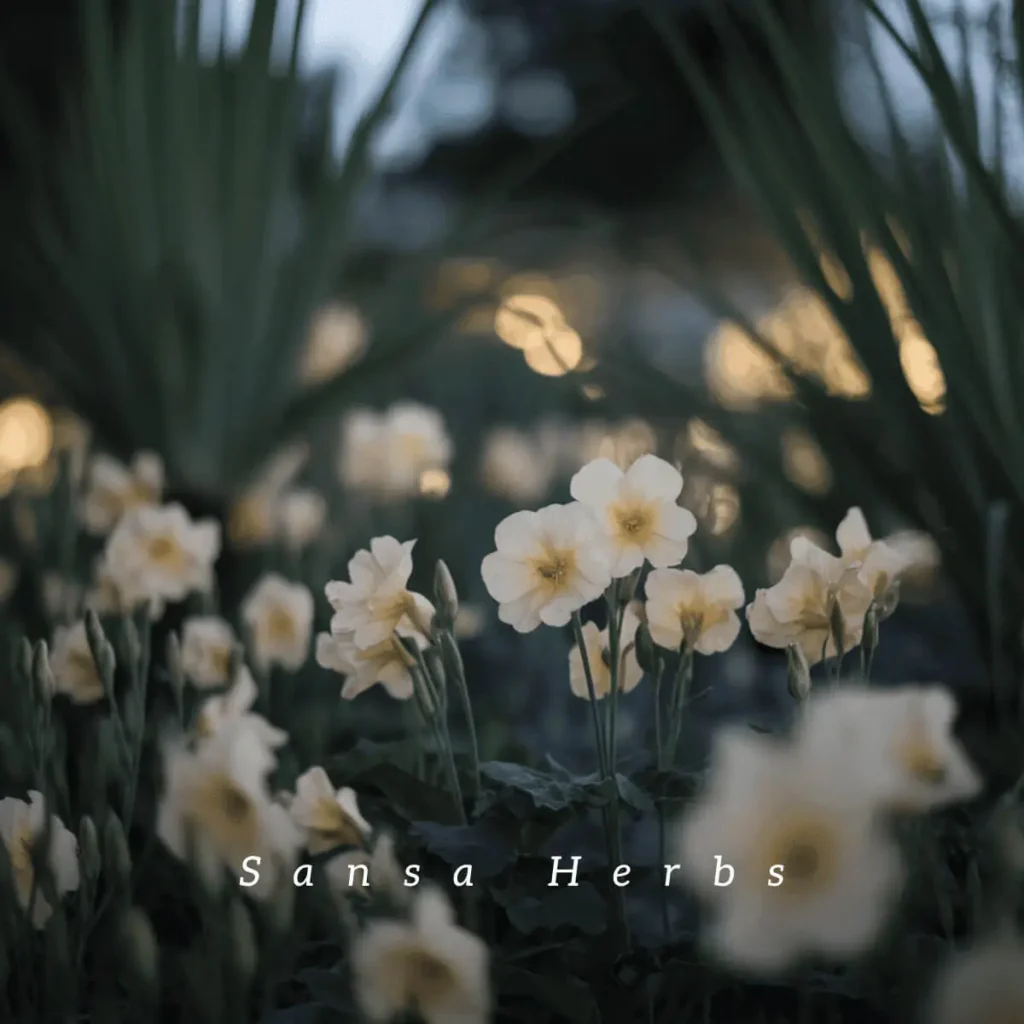
Evening primrose flowers are delicate and cup-shaped, opening in the evening and closing by noon the next day. Each 2-inch bloom features four heart-shaped yellow petals that unfurl dramatically at dusk, attracting night-pollinating moths with their sweet fragrance.
Evening Primrose Cultivars
There are several notable cultivars of evening primrose:
Oenothera biennis ‘Native Form’ is the wild type most valued for medicinal use. It features bright yellow flowers and produces seeds with high omega-6 fatty acid content.
‘Lemon Sunset’ offers particularly large blooms and a more compact growth habit, making it suitable for smaller gardens.
‘First Blush’ produces pink-tinged buds that open to reveal pale yellow flowers, adding variety to the traditional evening primrose palette.
“Not all evening primroses are created equal! While Oenothera biennis is grown for its medicinal seeds, stemless evening primrose (Oenothera caespitosa) is a dwarf, rock-garden variety with showy white flowers. Both open at dusk, but only O. biennis provides the omega-rich seeds used in herbal remedies.”
What Do Evening Primrose Seeds Look Like
Evening primrose seeds are small, angular, and dark brown to black in color. They’re about 1/16 inch long and have a slightly rough surface. The seeds are produced in abundance within long capsules that split when mature.
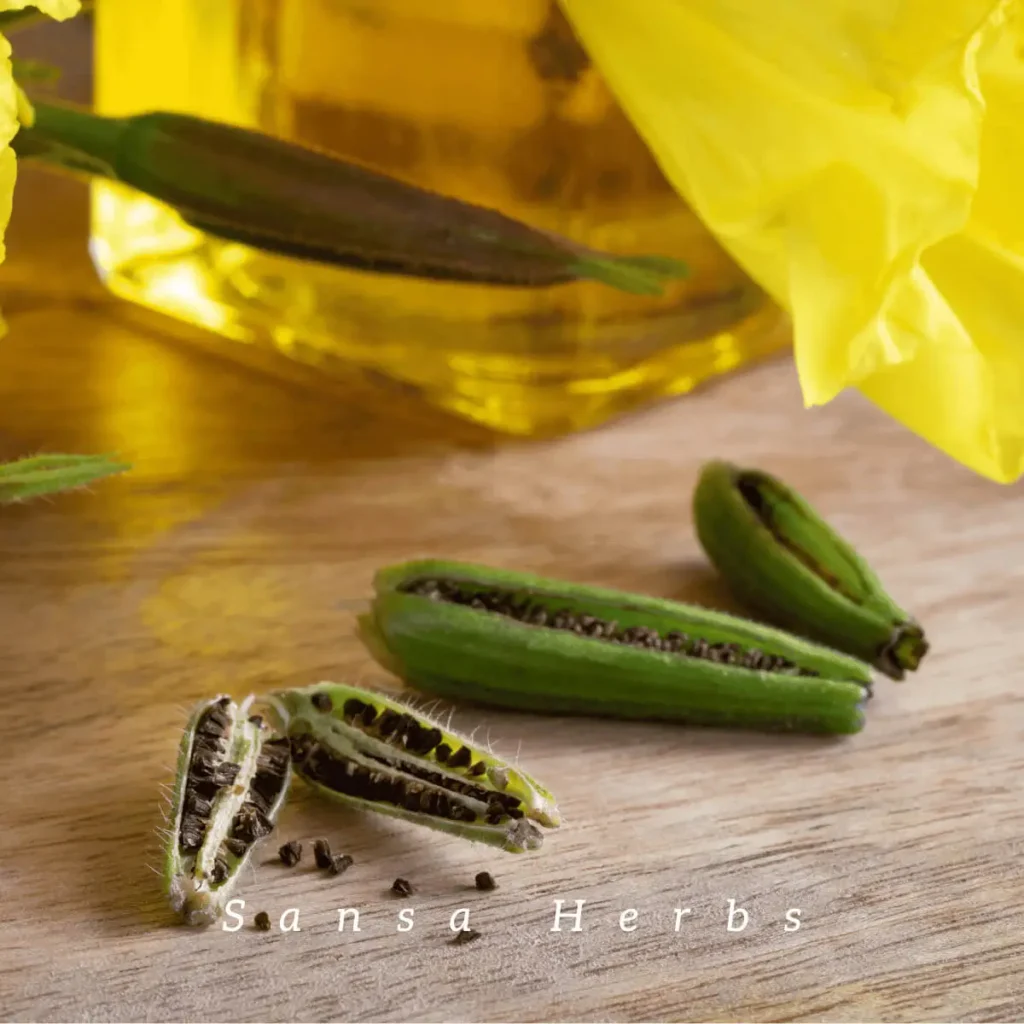
How to Grow Evening Primrose from Seed
To grow evening primrose, start seeds directly in the garden as they’re easy to germinate and prefer direct sowing. Seeds can be planted in late spring or early summer for blooms the following year. They need light to germinate, so press them lightly into the soil surface without covering them.
Evening primrose readily self-seeds, often producing volunteer plants throughout the garden. These volunteers can be left to naturalize or transplanted while young to create intentional drifts.
As a biennial, evening primrose spends its first year producing a rosette of leaves close to the ground. In the second year, it sends up tall flowering stalks that bloom from late spring through summer.
Container Growing Evening Primrose
While evening primrose naturally grows quite tall, it can be successfully grown in containers with proper planning. The key is providing adequate depth for its substantial taproot and enough space for its eventual size.
Container growing requirements:
- Choose containers at least 12-15 inches deep to accommodate the taproot
- Use pots with a minimum diameter of 18 inches
- Ensure excellent drainage with multiple drainage holes
- Select lightweight containers that can be moved if needed, as the plants may need winter protection in colder zones
Soil and Planting:
The container mix should be well-draining but not overly rich. Use a blend of:
- Standard potting soil
- Coarse sand or perlite for drainage
- A small amount of compost (no more than 20% of mix)
Maintenance:
Container-grown evening primrose requires slightly different care than garden-grown plants:
- Water more frequently, as containers dry out faster
- Monitor soil moisture carefully – while drought tolerant, container plants need consistent moisture
- Consider staking plants, as they may grow slightly shorter but still need support
- Place containers where you can enjoy the evening blooming display, such as near patios or walkways
- Allow for adequate air circulation between plants to prevent fungal issues
Remember that container-grown evening primrose will still follow its biennial growth pattern, forming a rosette in the first year and flowering in the second. In zones colder than 4, move containers to a protected area during winter months to prevent the roots from freezing.
Evening Primrose Seed Saving
To save evening primrose seeds, wait until the seed capsules turn brown and begin to split. Harvest the entire stem and hang upside down over paper bags to catch the falling seeds. The capsules will continue to split and release seeds as they dry.
Harvesting Evening Primrose
For medicinal use, harvest young leaves in spring before flowering. Seeds should be collected when capsules are brown but before they split open completely. The roots can be harvested in fall of the first year or spring of the second year.
A single evening primrose plant can produce thousands of seeds, making it an excellent choice for seed saving and medicinal use.
Medicinal Uses and Benefits of Evening Primrose
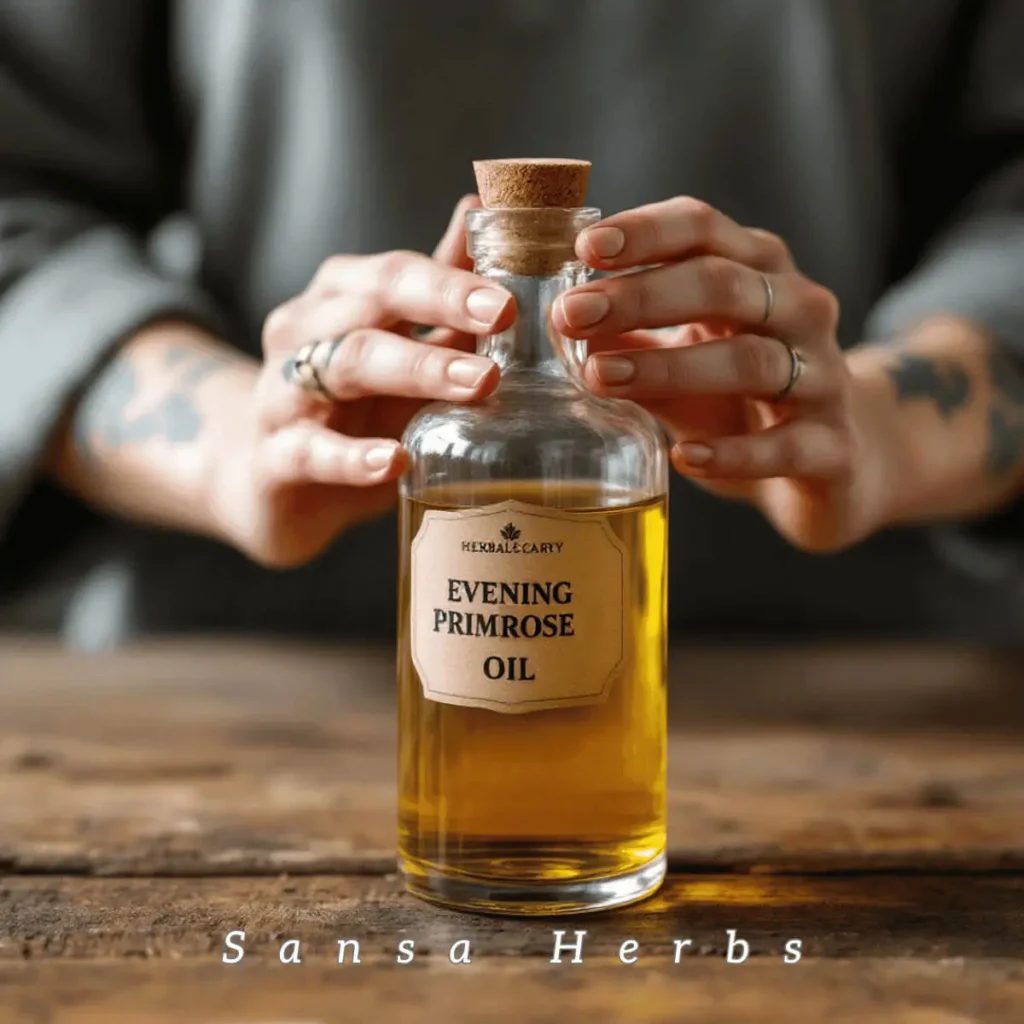
Evening primrose seeds are pressed to create evening primrose oil, which is rich in gamma-linolenic acid (GLA) and other omega-6 fatty acids. This oil has traditionally been used to support women’s health, skin conditions, and inflammatory responses. Young leaves can be eaten as spring vegetables, and roots can be prepared like parsnips.
You may enjoy: 20 Anti-Ageing Evening Primrose Oil Benefits for Mature Skin
Where to buy Evening Primrose Seeds
You can get premium evening primrose seeds here or explore a complete medicinal garden seed kit including evening primrose seeds here.
I hope this guide has inspired you to learn more about growing and using evening primrose. From its enchanting dusk-blooming flowers to its powerful medicinal properties, this versatile plant offers both beauty and wellness benefits to any garden. Its ability to thrive in various conditions, coupled with its generous self-seeding nature, makes it an excellent addition to both ornamental and medicinal gardens.
Happy gardening and healing!
Note: As with any medicinal plant, always consult a qualified healthcare provider before using evening primrose medicinally. While generally safe, evening primrose can interact with certain medications, particularly blood thinners, and may not be suitable for everyone.
Quick Reference: Growing Evening Primrose from Seed
| Basic Growing Information | Growing Conditions |
|---|---|
| Difficulty Level: Easy | Light Requirements: Full sun |
| Time to Germination: 4-21 days | Soil Type: Well-draining, poor to average |
| Time to Maturity: 70-90 days | Soil pH: 6.0-7.0 |
| Plant Height: 24-72 inches | Temperature Range: 55-75°F (13-24°C) |
| Spacing: 18-24 inches apart | Water Needs: Low, drought tolerant |
| USDA Zones: 4-9 |
Growing Locations
Container Growing: ✓ Excellent
Indoor Growing: ✓ Possible
Outdoor Growing: ✓ Ideal
Historical & Traditional Significance
Astrological Association: Moon
Traditional Uses:
Women’s health support, Skin conditions, Inflammation relief, Native American food source